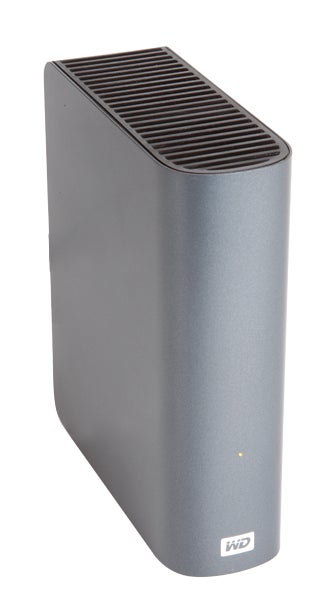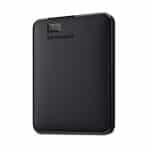


Because it's always on, I'm fairly certain that I have a good backup of all her stuff. The reverse also applies - her machine backs up her files (documents, etc.) to the server. Because the photos are synced to the NAS first, they're always available whenever she uses her laptop. In the past, I ran an rsync server on my desktop machine so she'd get copies that way, but making sure she was up to date required coordination - I'd have to make sure my desktop was on at the same time as her laptop. Similarly, my wife likes having a copy of all our photos on her laptop so she can have them to show people when she's away from home. It's all automated, so I never have to worry about making sure it's all backed up, other than checking the logs every now and again to make sure the copy's working OK. My desktop is where all of our photos first land, and I have a script that runs periodically to copy all the photos to the server. I run an rsync server on the little server, and my desktop and the wife's laptop both sync to/from it as needed.

Having it set up as a first point of contact for backups is great. It costs next to nothing to run, so it's left on 24/7. The end result is we pay less for electricity (important here in Hawai'i, given the rates we're charged) and it generates less heat (important on the days we run the AC). Instead of having to keep my desktop machine running when I'm not using it, I have a 5W server and a connected USB drive that powers up and down as needed. At home, I run a Guruplug with a 1.5TB USB drive hanging off it.
#Wd my book review 2tb full
This is aimed at users who want to add centrally accessible storage to their home network without the cost burden or setup hassles of a full fledged NAS. At best, it can complement an existing NAS in the network. Potential customers should realize that the My Book Live doesn't provide data redundancy or availability. The unit also has 256 MB of DRAM.īefore going into the review in detail, it is necessary to set expectations right.
#Wd my book review 2tb mac
The SATA port and GbE MAC are the only active components. For example, the PCI-E ports as well as the USB 2.0 OTG ports are fully disabled. It has a host of features which are not utilized by the MyBook Live. The My Book Live is based upon the APM82181, a 800 MHz PowerPC 464 based platform ( PDF). Today, PowerPC platforms power network attached hard disks such as the My Book Live we are dealing with today. With the Intel Atom pushing out Marvell chipsets from the mid-to-high end NAS market, Marvell chipsets took over the low end market based on the PowerPC platforms. I had mentioned in one of the earlier NAS reviews that we have stopped seeing PowerPC based NAS platforms.

The My Book Live lineup consists of 1 TB, 2 TB and 3 TB Western Digital hard disks in an external enclosure with a GbE port and a power adapter port. Western Digital has tried to address these two concerns with the My Book Live lineup. However, many users are still wary of trusting third party servers with the files. On another note, companies like Apple and Google as well as startups like Dropbox and Box.net have made the cloud a buzzword amongst consumers. Many mainstream consumers also don't want the burden of configuring and running a NAS with multiple hard disks. However, the transfer rates over USB are not quite satisfactory for most users. Almost all mid-range and higher routers ship with USB ports. Network attached storage units have started becoming popular with the rise of powerful home networking solutions.


 0 kommentar(er)
0 kommentar(er)
